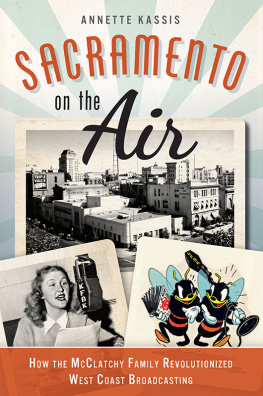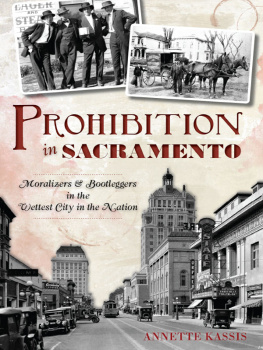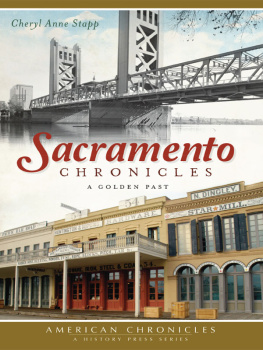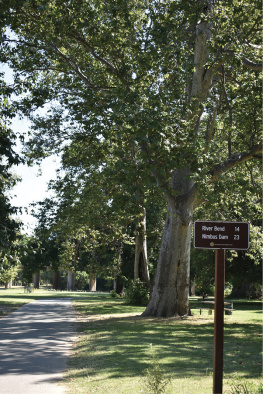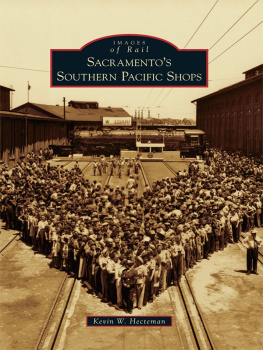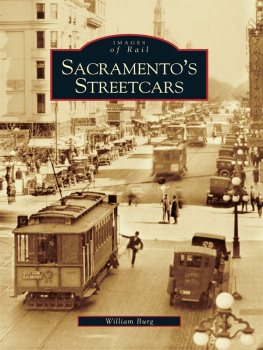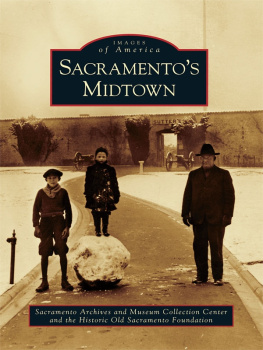


Published by The History Press
Charleston, SC
www.historypress.net
Copyright 2015 by Annette Kassis
All rights reserved
First published 2015
e-book edition 2015
ISBN 978.1.62584.620.4
Library of Congress Control Number: 2015947034
print edition ISBN 978.1.62619.165.5
Notice: The information in this book is true and complete to the best of our knowledge. It is offered without guarantee on the part of the author or The History Press. The author and The History Press disclaim all liability in connection with the use of this book.
All rights reserved. No part of this book may be reproduced or transmitted in any form whatsoever without prior written permission from the publisher except in the case of brief quotations embodied in critical articles and reviews.
For my grandmother Dovie Gilley Green. I wish I had known youI wonder what happened to you I hope someday well find you. 1895?
CONTENTS
ACKNOWLEDGEMENTS
In the 1960s, when I was a child in Sacramento, my parents gave me a General Electric transistor radio. About three inches wide and less than five inches long, it came in a leatherette case with a strap that I found perfect for hanging on the handlebars of my bicycle. I kept the dial primarily set to Sacramento station KROY so I could listen to DJ Wonder Rabbit, aka Martin Ashley.
Later, as a teenager living in northwest Louisiana, I spent many nights with my tabletop AM/FM radio carefully tuning the dial on the AM band to see what distant stations I might pick up. My favorite was WLS in Chicago, and I loved listening to John Records Landecker (Records truly is his middle name). I wrote to him when I was sixteen, and he sent me a T-shirt. At the time, I had no idea I was engaging in my own version of distance listening. This practice of carefully tuning the radio receiver to pick up signals from distant stations was the primary activity of many radio enthusiasts in the 1920s, something I didnt know when I was trying to keep the volume low enough so my parents would not know I was still awake but loud enough to hear the broadcast.
As an adult, Ive spent a significant part of my advertising career writing commercials for radio. I prefer to write for radio rather than television primarily because of radios theater of the mind aspectI can show anything on radio if I can get the listener to imagine it. Suffice it to say, radio is something in which I became interested at an early age, and I have never lost the fascination.
This book is a labor of love. It began its existence five years ago as my masters thesisalthough this book is very different from my earlier academic work. I had thought it would be my first book; as it turns out, its my third. But in revisiting the years of research I did for my thesis and in digging deeper into the lives of the people who make up this portion of Sacramentos broadcasting history, I realize those five years had to elapse between thesis and book before I could tell this story.
Between my thesis, which served as the starting point, and the completion of this work, there are many debts incurred and many people to thank.
California State UniversitySacramento (CSUS) professors Chloe Burke and Scott Lupo formed my thesis committee and strongly supported my research interests. Im pleased to say each has migrated from mentor to dear friend. I hope they are pleased to see the academic work rewritten as a more popular work.
My years as a fixture in the reading room at the Center for Sacramento Historythe archive of the city and county of Sacramento, as well as the repository of some wonderful private collectionsbegan when I was a graduate student. I am indebted to the help and support Ive received through all my projects from city historian Marcia Eymann, deputy city historian Dylan McDonald, photographs archivist Rebecca Crowther and archivist Patricia Johnson.
Once again I tested friendship and family ties by relying on the talents of my two invaluable manuscript readersRoma Heerhartz and Frances Rae. These two had to endure reading the early, clunky, problem-ridden draft of this work, and I thank them both for being so kind when they rendered their critique. This is the third time they have both served as readers and editors of my work in its early stages; either they are crazy, or they love me. Id like to think they love me.
Roma, who has been reading my work for decades as my business partner in our advertising agency K&H Marketing, is so used to the idiosyncrasies in my early stage writing that I could practically pick out where I would find her notes in the early draft version of the manuscript. When she tells me a sentence is awkward, I believe her.
When I discovered that my sister, Frances, was a top-notch editor in addition to being a wonderful sister, I immediately pressed her into service. That was three books ago. In addition to making wonderful suggestions about restructuring the manuscript for this book to its present form, she not only recommended the family tree and timeline but also researched all the family tree information for me. I owe her a great deal for that!
Writing might be done in solitude, but the writer relies heavily on family for support. My mother, Gertrude Loften Stout, who remains my biggest cheerleader, has never been one to lavish praise lightly, and so her words of encouragement mean the world to me. You are so right, mom, life is good.
Likewise my son, Michael Kassis, and my future daughter-in-law, Kayla Bettencourt, are solid in their support. Family means everything, and I am very proud of both of them. My husband, Rich Kassis, has endured the long weekends when Im locked away writing, the evenings Im not home because Im researching and the inevitable pangs of doubt I feel in the early stages of working on a new book. Thanks to his solid support, I am able to keep going and push through the struggles that are always a part of this type of work.
Finally, I want to acknowledge a woman whom I have never met, but who is a very big part of me: my paternal grandmother, Dovie Gilley Green. Dovie suffered a great deal of loss and pain in her lifemuch of it from those who should have loved and protected her. Not knowing all the circumstances of her life and death has fueled my passion for digging into the stories of our American cultural past. Someday, I hope we will know what ultimately happened to her. When we do, I will surely write about it.
It is to her that I humbly dedicate this book.
McCLATCHY FAMILY TIMELINE
AND LIST OF ACRONYMS
McCLATCHY FAMILY TIMELINE
James McClatchy and Charlotte Maria McCormack
James McClatchy
- Born in Ireland, 1824
- Arrived in New York circa 184446, having sailed from the port of Belfast
- Became naturalized citizen in New York on November 2, 1846
- Came to California circa 1849 (the gold rush)
Charlotte Maria McCormack
- Born in New Brunswick, Canada, of Irish-born parents
- Arrived in Sacramento from Canada circa 1852
- Was first married to Edward Feeney, 1853 (Feeney died in 1854)
- Married James McClatchy in 1856
- According to the 1900 census, she gave birth to nine children, four of whom survived:
- Valentine Stuart McClatchy, born 1857
Next page
